In addition to the New River Gorge Bridge for Bridge Day, one of the main tourist attractions in West Virginia is the Trans-Allegheny Lunatic Asylum in Weston.
Shae visited the former asylum something like ten years ago with one of her friends and found it really creepy, so I was looking forward to checking it out for myself.
Unfortunately they seem to have made some changes to their tours since then and so it wasn’t quite what I was expecting. Despite that, we returned for a flashlight tour the following night as it was leading up to Halloween – that tour was more interesting as it was a ghost tour.
Here’s more about our experience at the Trans-Allegheny Lunatic Asylum.

The former asylum offers several tours for visitors that cost from $10-$35 + tax per person. We thought the Four Floor Tour would be one of the most interesting and would ensure we got to see as much as possible, so we went for that.
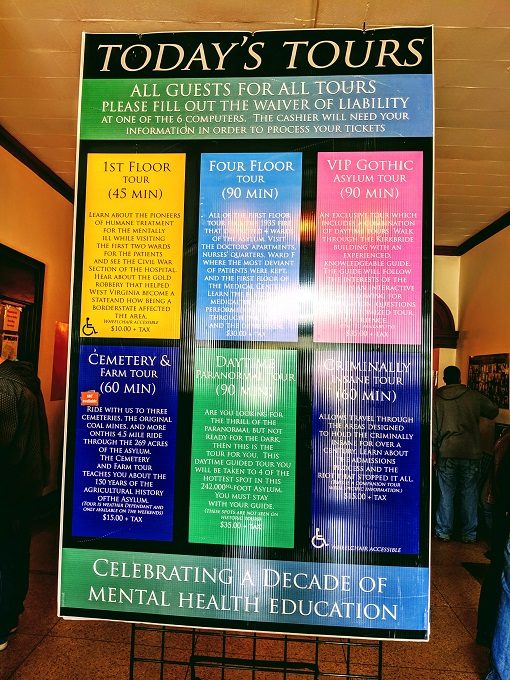
You have to complete a waiver before buying your tickets, with several computers set up on the opposite wall for that purpose.
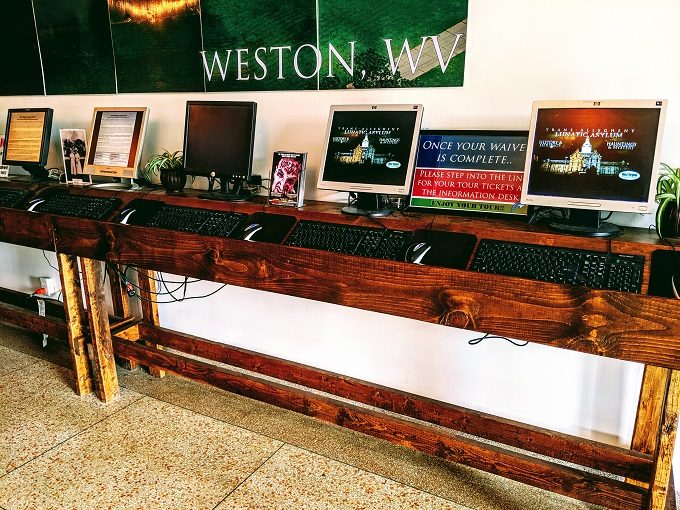
Tours run continually throughout the day and we only had to wait a few minutes for our Four Floor Tour to start. We started off by heading up to the second floor which is where staff once lived. The head physician and superintendent appeared to have the nicest living areas; the rooms have been refurbished with period furniture, although the furniture isn’t original to the site.
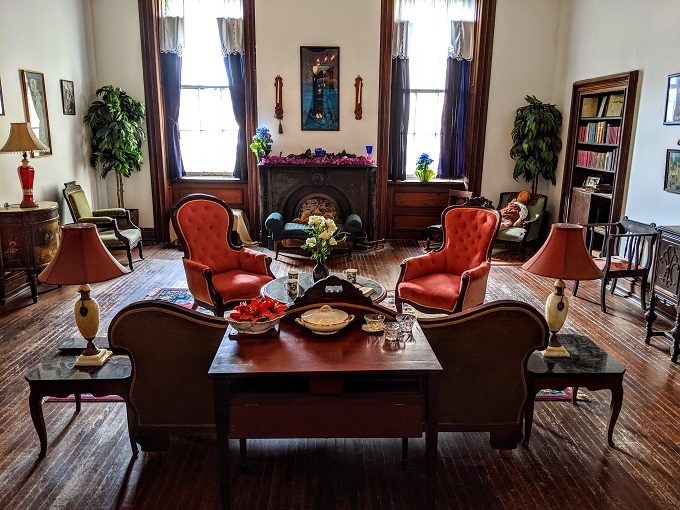
The head physician also had a spacious balcony overlooking the surrounding area. A railroad used to run past the front of the asylum, with a stop right outside. If you lived far away and wanted a relative to be committed, you could put them on a train, send a letter to the asylum and they’d collect your relative without you needing to make the journey.
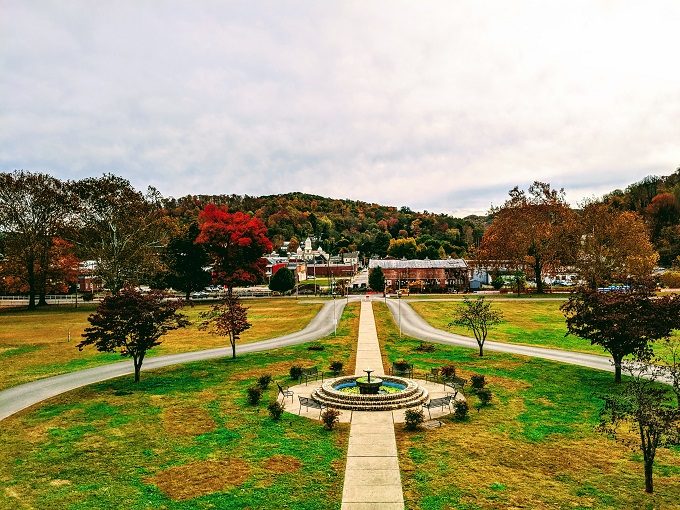
While the Trans-Allegheny Lunatic Asylum went on to become extremely overcrowded, it seems like early on they did put an emphasis on patient care. For example, they had formal dining areas for patients as they believed dining this way would help them behave in a more civilized manner and assist with their treatment.
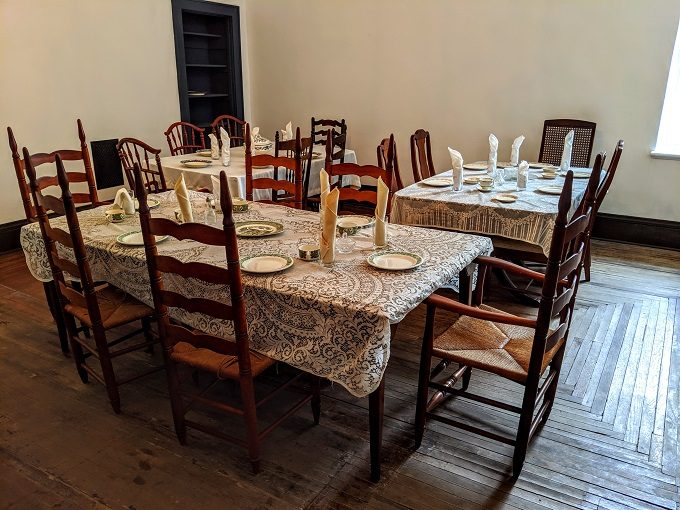
The second floor was also home to the apothecary, offices and a patient library.
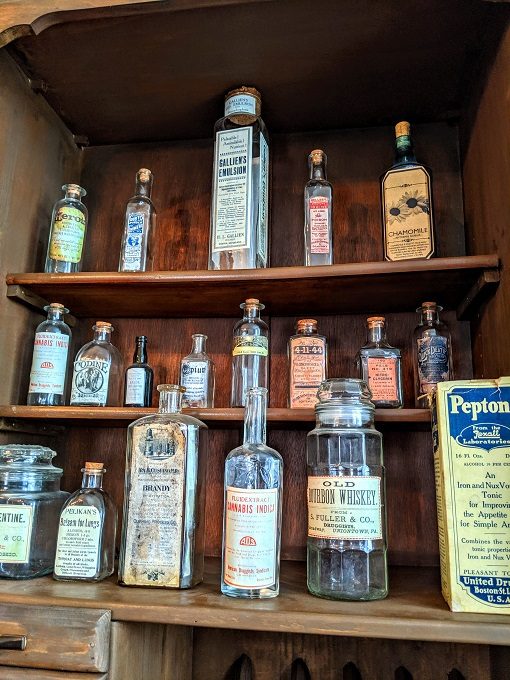
We then headed up to the third floor which is where the nurses lived, with 16 of them living on each side. The person in charge of recruitment had strict rules about who could be employed as nurses. Women had to be 25+, have no children, no husband or boyfriend and – most controversially (now) – had to be unattractive. The reasoning behind that latter requirement is that if nurses were deemed to be ugly, patients and physicians wouldn’t be distracted.
In addition to being ugly and single, nurses weren’t paid particularly well either. Their wages were $13 per month, but they had to pay $12 per month to live there, leaving them with $1 spending money per month. That’s not much, but they had to work 12 hour shifts every day and only got one day off a month, so they didn’t have much opportunity to spend their money. I can’t imagine morale was particularly high.
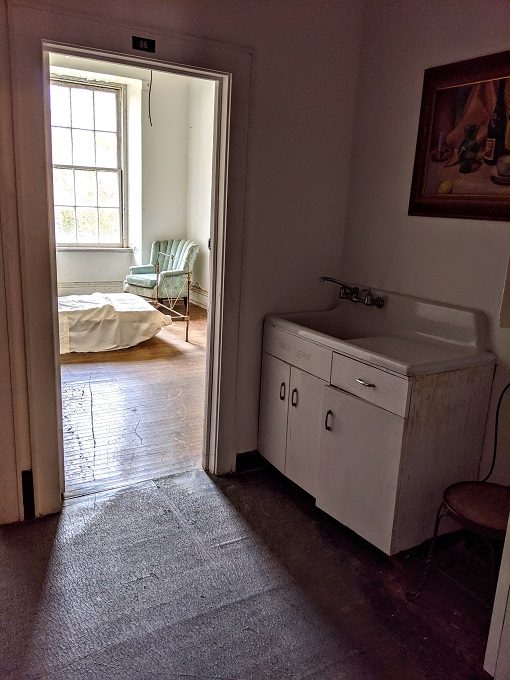
The asylum had a fairly large ballroom which was used for community events including basketball games, school plays, community meetings and more.
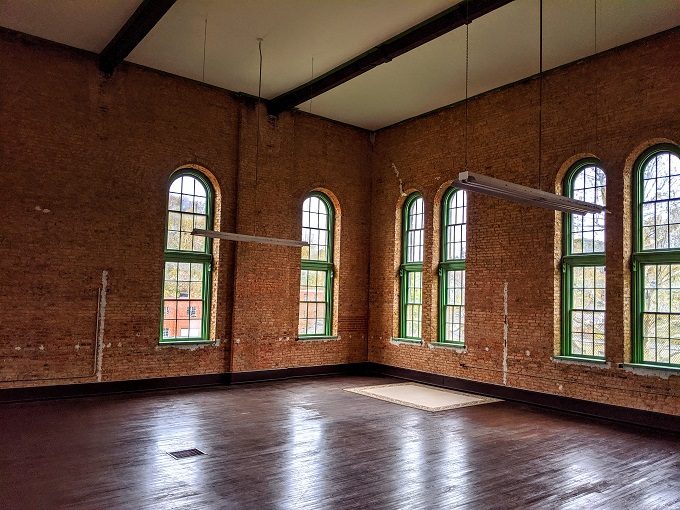
The third floor was also home to a wide variety of other areas. For example, there was the electroshock therapy unit…
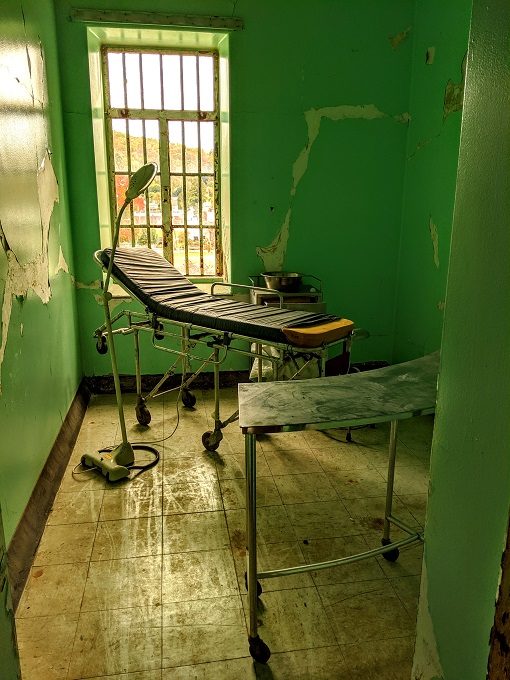
…violent females ward…
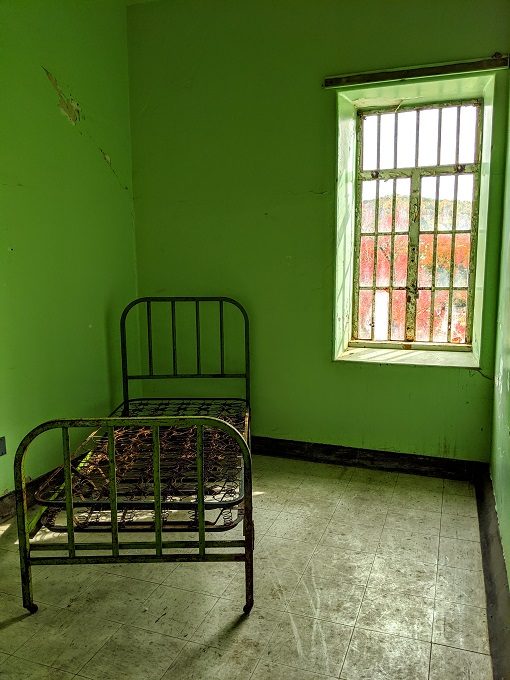
…and seclusion cells, something that could be found in every ward and on every floor.
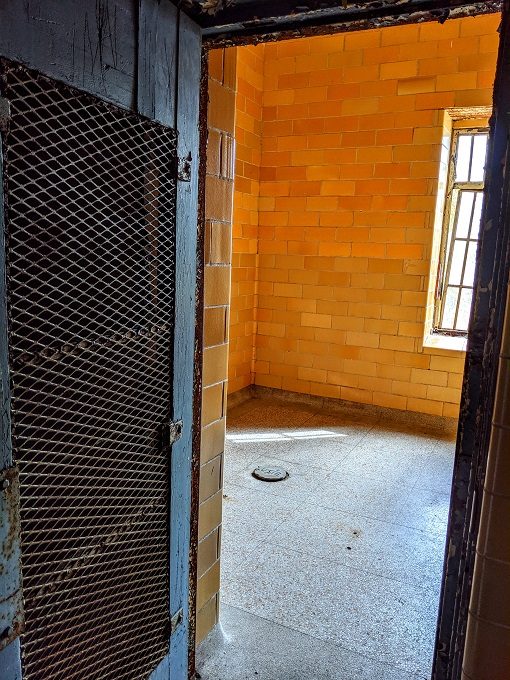
Interspersed among all this was a patient day area which aimed to improve their quality of life. Large windows were installed to increase the daylight on the floor and archways were built into the wall to provide patients somewhere to retreat to.

One of the worst parts of Trans-Allegheny Lunatic Asylum’s history surrounds its employment of Dr Walter Freeman, the creator of frontal lobe lobotomy. Dr Freeman worked at the asylum for two weeks after they brought him in to perform lobotomies.
If you’re squeamish, you might want to skip to the next paragraph. To perform the lobotomies, he used a leucotome that looked like a pair of metal chopsticks. These went through the eye socket into the brain, were wiggled around to sever nerve connectors in the frontal lobe and were then brought back out once he’d deemed the nerve connectors sufficiently severed.
Needless to say, these procedures weren’t particularly successful and not just for the reasons you might expect. For starters, Dr Freeman would pick patients at random for lobotomies, despite asylum staff providing a list of patients they deemed highest priority for the procedure. That meant patients that didn’t “need” lobotomies still ended up receiving them.
He also didn’t believe in anesthesia or germs, so the lobotomies were both more painful than necessary and greatly increased the risk of infection.
Dr Freeman ended up performing more than 200 lobotomies during his career before losing his license. One of his biggest failures was the lobotomy he performed on Rosemary Kennedy, the sister of John F. Kennedy. She was 23 at the time and the procedure went so badly, she had to be institutionalized for the rest of her life.
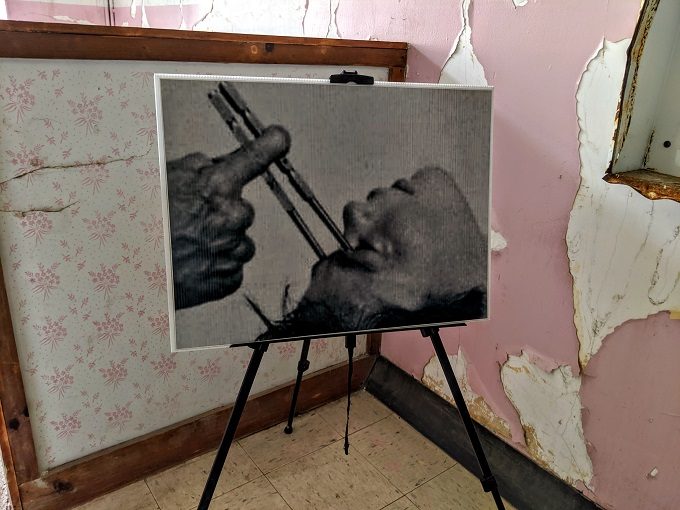
Inevitably, lobotomies didn’t go well. Just as inevitably, the dorm-style seclusion rooms didn’t always go well either. After all, secluding someone with other people is an oxymoron.
Our guide told us a story which was a bit gory, so I won’t go into too much detail here. All I’ll say is that it involved a violent patient, several other patients, one unlucky victim’s head, a bed and much jumping.
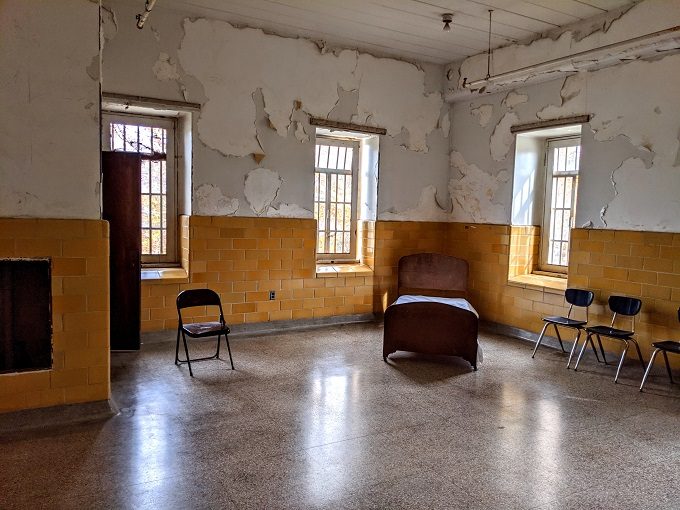
Our next stop was the fourth floor which had many uses over the years. At one point it was used as staff quarters; it wasn’t a very pleasant living area as there was no daylight up there at that point. Windows were subsequently installed and part of the floor was used for patients with drug and alcohol problems.
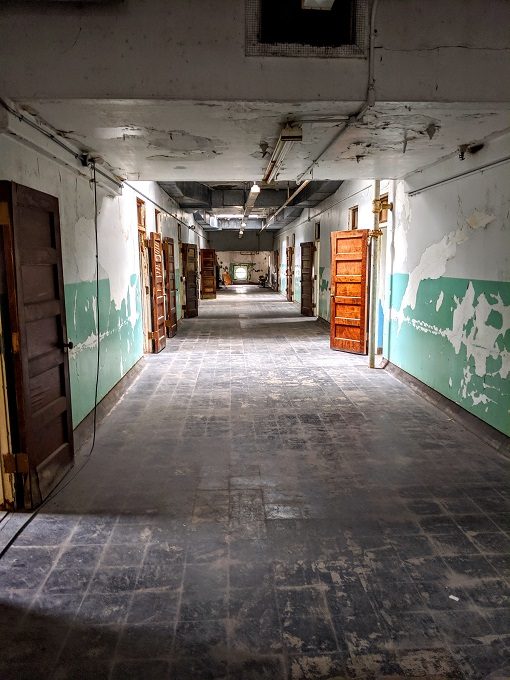
Some of the floor has been renovated to recreate the staff living quarters, although it presumably looks nicer now than it did back then, especially now that there are windows.
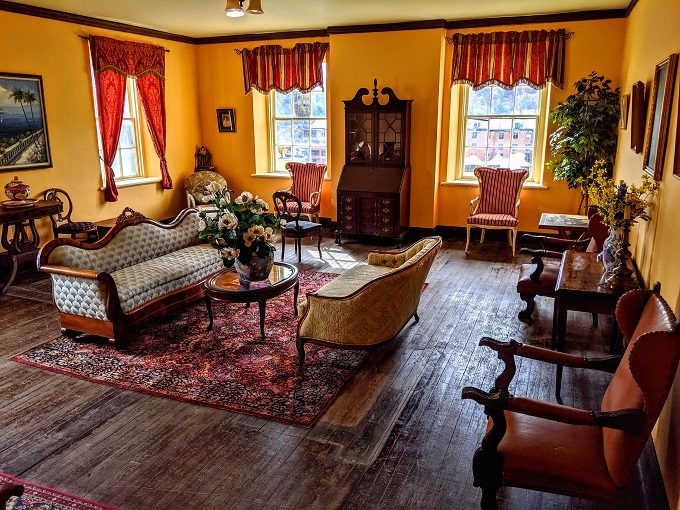
After touring the fourth floor, we headed downstairs and outside to see some of the other areas and buildings on the grounds of the asylum. One of those sections was a fenced in outdoor area for the criminally insane. This was built in 1989, five years before the asylum closed down.
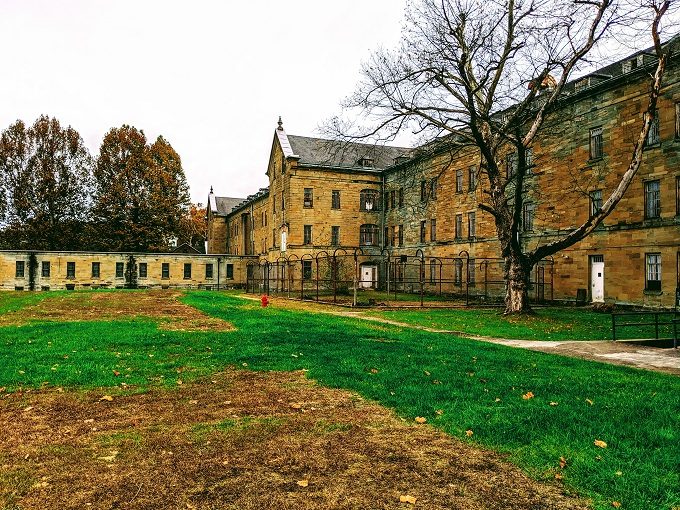

We passed the boiler room which provided steam heat for the asylum and then arrived at what was once the medical center.
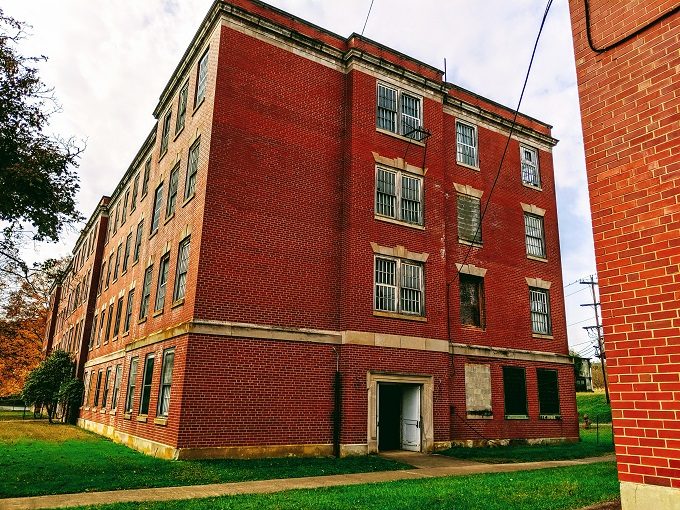
This building once held rooms containing an EEG machine, a dentist office and a salon.
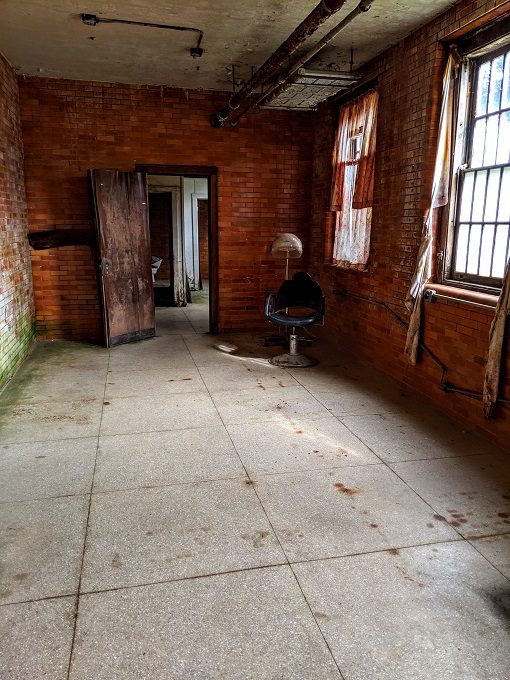
It was also home to the morgue which had a body cooler as there were no incinerators on site. Bodies were kept at the Trans-Allegheny Lunatic Asylum for five days; if no one claimed it after that, the asylum took care of the burial.
From when construction of the asylum ended in 1881 to when it closed in 1994, anything from 20,000 to 65,000 people were buried there. Mile markers were used as gravestones, with copper tubes buried with the bodies that contained the patient’s birth and death certificates to help identify them in the future if necessary.
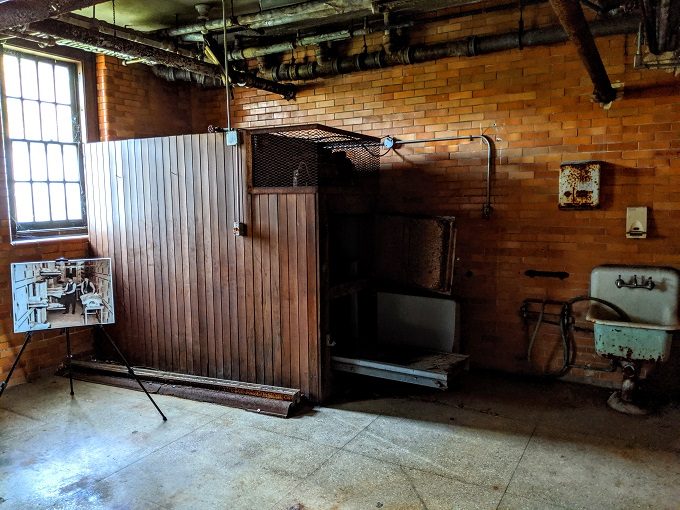
Although construction of the asylum wasn’t completed until 1881, it began in 1858. Due to its location, it was used as a treatment area for Civil War soldiers and was subsequently used as a home for older soldiers.

The tour then took us into the room that was once a dorm for the first nine patients of the Trans-Allegheny Lunatic Asylum. This room had boards containing information about the women – their ages when admitted, when they were admitted, the reason they ended up there, etc.
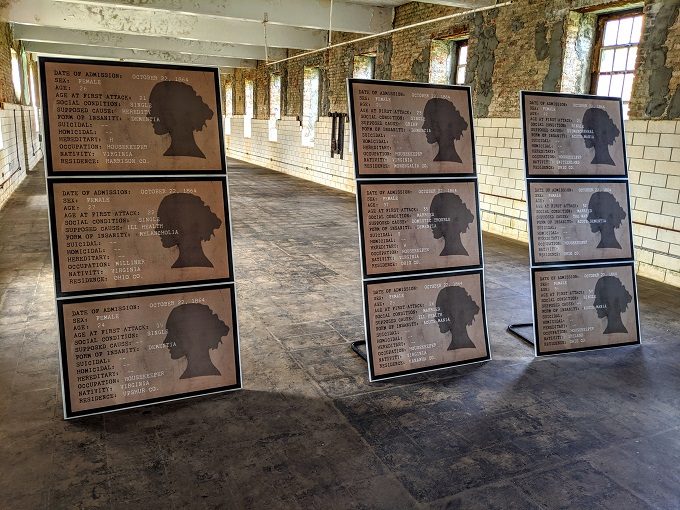
One of the first patients was admitted for dysmenorrhea – menstrual cramps(!)
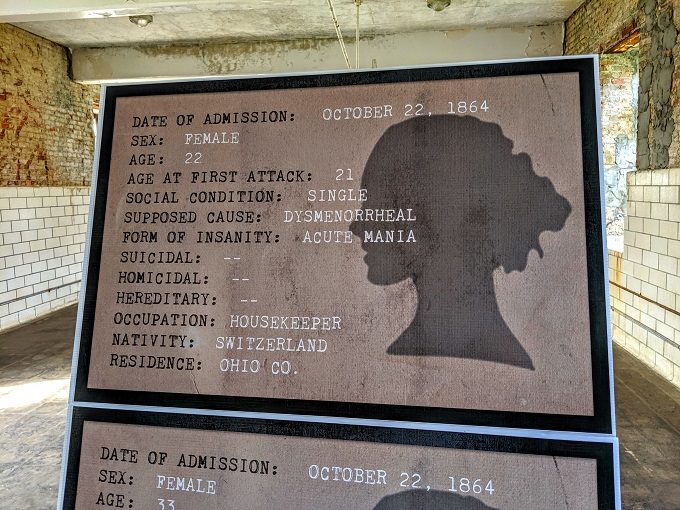
One of the final sections we visited was Ward 4 which is where military geriatrics resided. To assist them with walking down the corridors, small pieces of wood were attached to the walls to give them something to hold on to.
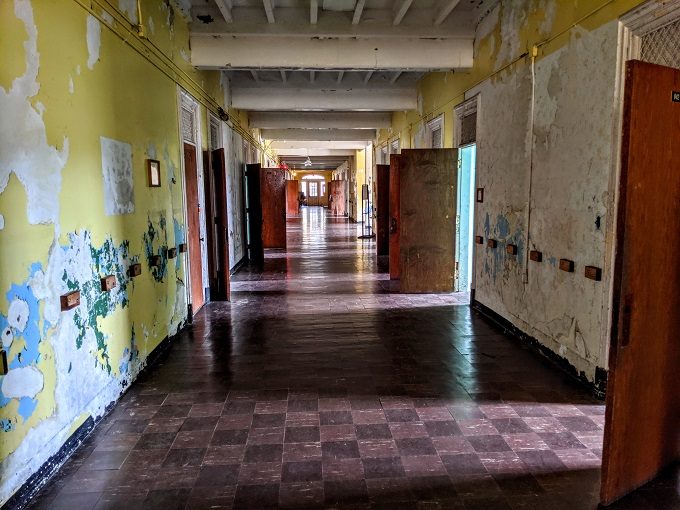
Shortly after that our tour ended, but we then got to tour the first floor where there was more of a museum area with several more exhibits.
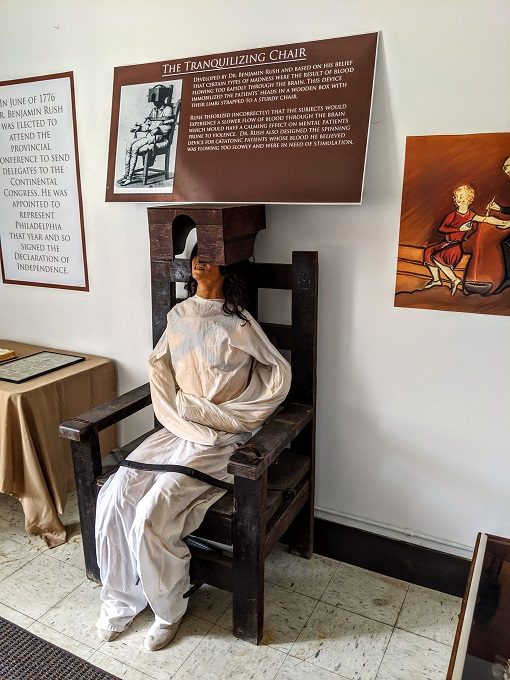

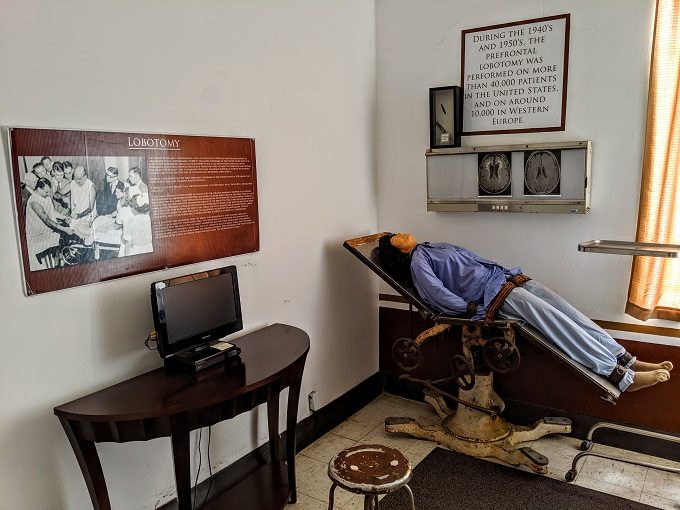
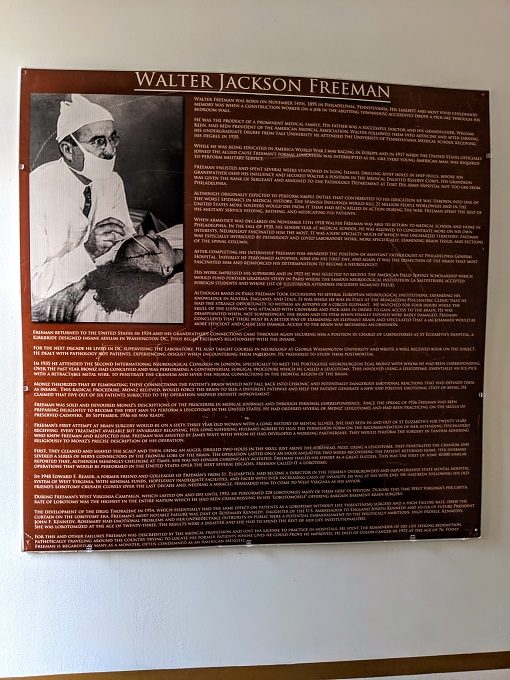
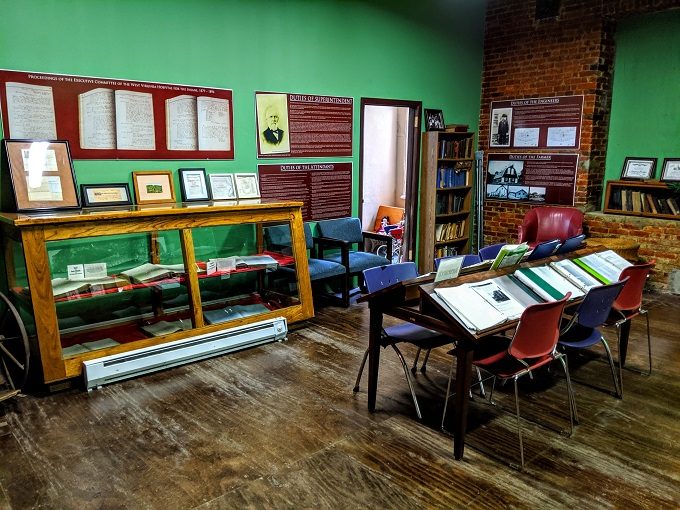
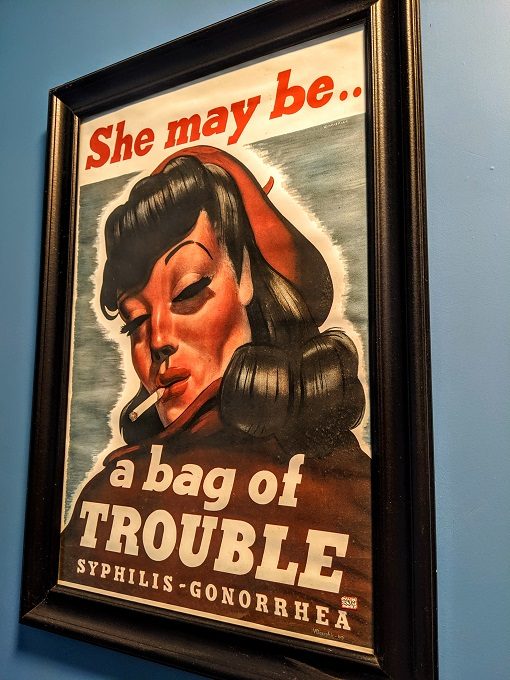
Thoughts On The Four Floor Tour
To be honest, the Four Floor Tour at the Trans-Allegheny Lunatic Asylum was a little underwhelming. I don’t think that’s the fault of our tour guide though as she was very knowledgeable.
I think the problem lies in how the tours are actually set up and the information that’s provided in each one. My expectation had been that our tour would give us a better understanding of the asylum’s history, especially regarding how patients were treated both in terms of medical and ethical treatment.
Instead, it felt like it was more of an architectural tour with a little bit of history thrown in. We learned about the building’s construction, its furnishings, the sandstone used to make the asylum, what the different buildings were used for, how they were decorated, etc.
Other than the short sections about lobotomies and the story of what happened in the non-seclusion seclusion room, I didn’t find it particularly interesting. It’s not that I wanted to get titillated about how badly patients were treated, but I wasn’t it expecting to more closely resemble a historic home tour either. Due to the much more expensive evening ghost tours they offer, it seems like they don’t provide any of those kind of stories during the day to encourage you to come back and pay even more.
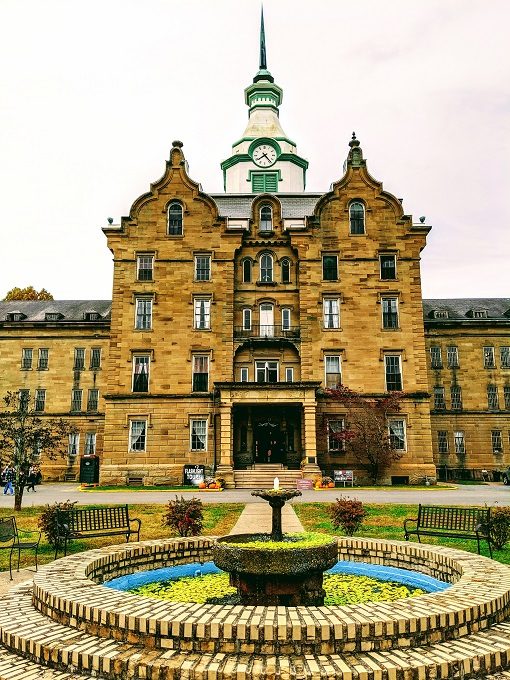
I think part of the problem I had with our tour was its cost. Including tax, it cost $32.10 per person, so $64.20 for the two of us. Seeing as our road trip budget is only $100 per day, that’s a significant amount to spend on one activity for us. I think we could’ve gotten a similar amount of information by just spending $10 + tax per person to do the First Floor Tour instead, so I’d recommend that sooner than I would the Four Floor Tour.
Another of the problems is that a lot of effort has gone into recreating the staff living quarters, but not much has gone into the patient areas. As a result, the staff areas are beautifully furnished, while the patient areas are simply empty rooms and wards for the most part. The asylum suffered from chronic overcrowding, with beds having to be placed in some hallways. Having the wards recreated like that would give some small semblance of understanding as to what life was really like for patients.
One thing I do want to highlight as a positive feature is that the asylum is somewhat pet-friendly. If you can carry your dog in your arms or in a doggy backpack, they’re welcome to come on the tour. We didn’t realize that before we arrived for our main tour, so Truffles had to stay back at our hotel. However, she did get to join us for our next experience.
Flashlight Tour
Despite the fact that both Shae and I were underwhelmed with the Four Floor Tour, we decided to return the following night. We were visiting the area towards the end of October, so the Trans-Allegheny Lunatic Asylum was running additional activities in the evening for Halloween.
There’s a haunted house, flashlight tours and more. They offered four different flashlight tours and we chose the Strange Happenings tour. This tour cost $10 + tax per person, so even though it only lasted for 30 minutes, I didn’t feel as bad about spending even more money there.
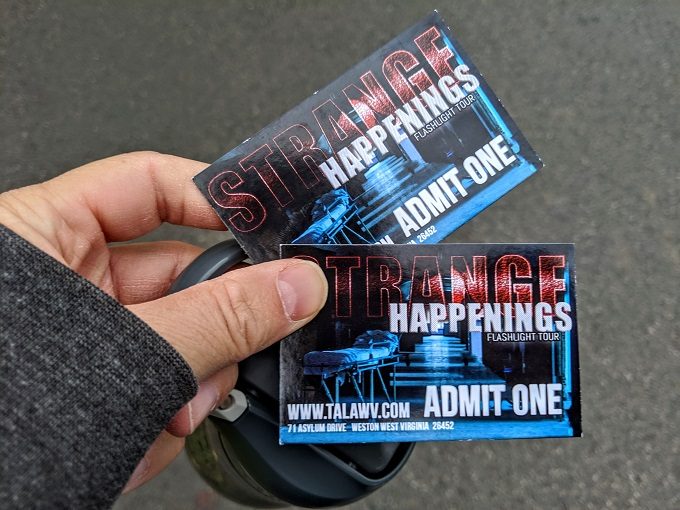
Thankfully this tour was far more interesting as it was a ghost tour. Our guide knew his stories and even though I was skeptical about much of what was shown and told, it was still significantly more entertaining.
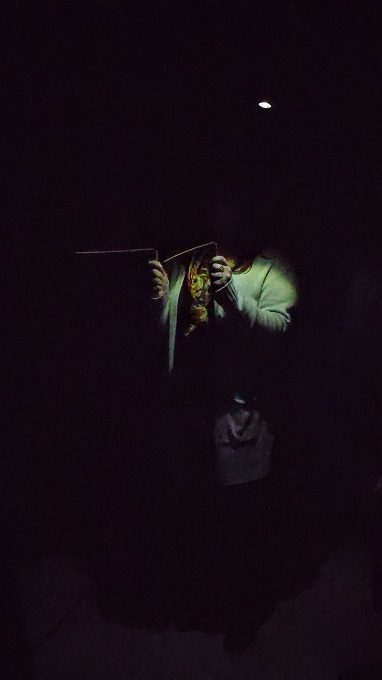
The ghost tour went by extremely quickly and I apparently didn’t take any other photos during it, so sorry that there’s not much more to report about it!
Final Thoughts
If you visit the Trans-Allegheny Lunatic Asylum, I’d give the Four Floor Tour a miss. However, I’d say it’s still worth checking out, even if you just spend $10 to tour the first floor as there’s still a lot of information there about its history.
The $10 Halloween ghost tour was also fun, so that’s another good option if you’ll be visiting in October.
Address
Trans-Allegheny Lunatic Asylum, 71 Asylum Dr, Weston, WV 26452
Enjoyed reading about your tours. I saw the signs for the asylum while driving through WVA last summer and was curious. Now I’m not sure I care to go, however, I don’t think that the rooms occupied by some of the staff and all done up would be worth the money to see. But I am glad that you two went and wrote about it. Quite disturbing to read about women being confined to the place just beause they had bad periods that made them cranky. No ibuprofin in those days. Columbia, SC, also has a now abandoned lunatic asylum and it is being redone for current use. The large residential building is going to be turned into apartments, the morgue is already a barbecue restaurant. (yes)
A similar thing was done in a former asylum near where I used to live in the UK.
As for visiting the asylum, it might still be worth visiting; I’d just choose one of the other tours. I think even the regular $10 tour would be worth it, just not so much the Four Floor Tour.